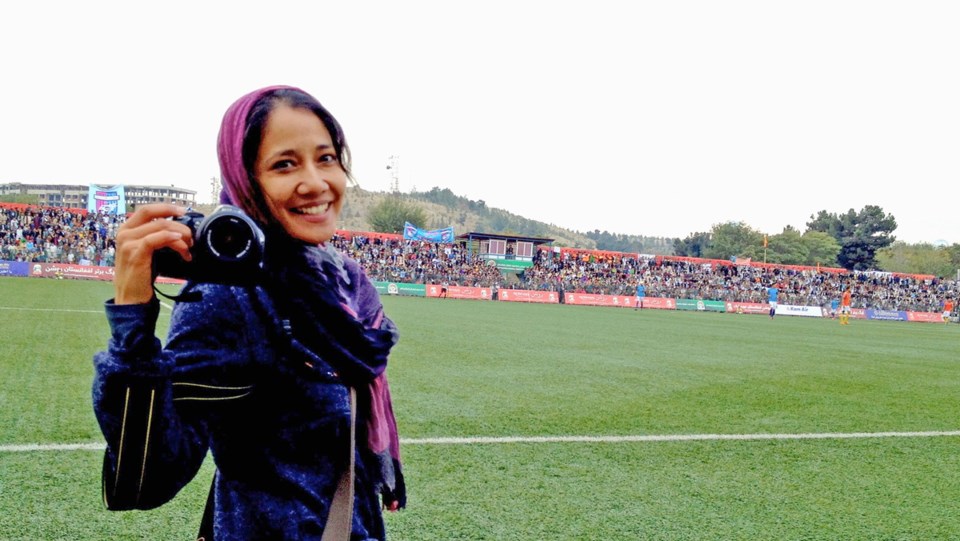The Colombian boy Athena Madan calls H was just nine years old when he first climbed into the vats where the cocaine paste gets made.
Children are the right size for the job, clinging to the vat’s rim with fingers and toes while using long straws to suck the gasoline, cement and caustic soda out of the coca leaf mixture.
It’s pretty hard on the system, though. By the time Madan met H, when he was 25 and fresh out of an eight-year prison stretch, his health was a mess. “His stomach hurt too much to eat anything more than shredded lettuce,” she says. “Drinking pop hurt his nose. Tea hurt his throat. He’d not gone to the bathroom for two days.”
Worse, H (the no-name thing is a safety measure) was isolated from his family and all but three acquaintances. After H got busted, the cartel that recruited him as a boy treated him as damaged goods, untrustworthy. The cartel money that had supported his impoverished family dried up, and he couldn’t go near them for fear that they, too, would be tainted by association.
Also, he had no government health care. Many others who spent their childhood off the radar in the jungle camps, and who now find themselves afflicted with debilitating conditions after years of breathing in the fumes in the vats, are in the same position.
“We are disposable bags of trash,” H told Madan.
Madan tells this tale while sipping coffee at a picnic table at Royal Roads University, just up the hill from Hatley Castle, beyond which Juan de Fuca Strait glistens on a brilliant spring day. Peacocks poke around at her feet. Deer gingerly pick their way around the lawned and wooded campus. It looks like a Disney movie (or at least a 20th Century Fox one, since she’s a stone’s throw away from the spot where Ryan Reynolds posed in his Deadpool suit).
The contrast between this safe and serene oasis and the grimness of H’s story is not lost on her. “It is jarring,” she says.
Madan is an assistant professor in the school of humanitarian studies at Royal Roads, where her bio describes her experience as a clinician, researcher and aid worker in 18 countries including Afghanistan, Bangladesh, Colombia, the Democratic Republic of Congo, Ghana, India, South Africa and Vietnam.
She’s interested in the social and political forces behind health problems, particularly in places beset by long-term conflict and fragility — refugee mental health, say, or the rehabilitation of child soldiers.
Recently, her submission titled Children Trafficked for Cocaine Production in Colombia was chosen as a winner of the 2018 Untold Health Story Contest. The contest — a collaboration between National Public Radio, Johns Hopkins University in Baltimore, the Washington, D.C.-based Consortium of Universities for Global Health and the online forum Global Health NOW — is meant to shine a light on underreported health issues from around the world. Madan’s was one of two winning entries — the other involved hemophilia in developing countries — chosen from 150 submissions. It will result in NPR delving into her subject matter this year, maybe resulting in change.
There are many Colombians in H’s predicament, she says, particularly as the country tries to reintegrate FARC — the Spanish acronym for Revolutionary Armed Forces of Colombia — guerrillas who demobilized in 2017 after a half-century-long insurgency. With FARC entangled with the drug trade, Colombia now finds itself dealing with those cocaine-camp kids emerging from the bush, ridden with health issues. Registered FARC members are supposed to get health coverage as part of the peace deal, but where the children — particularly those who, like H, lost entitlements after being imprisoned — fit in isn’t clear.
Also note that many kids continue to toil for guerrilla groups not covered by the demobilization deal. The cocaine business is booming.
H is an example of the toll that takes. He was tied both to FARC and the cartel that recruited him at age nine. By 11 he was supervising other children in the camp. By 14, too tall to be working in the coca vats, he was a gun-toting soldier working security. By 16 he got into the leadership of the local cartel. By 17 he was in prison.
Madan came across him in 2015 after he got out. “He physically couldn’t eat, not out of fear, but because of discomfort.” Nonetheless, he was less worried about his own health than that of his family, she said. “He was worried about their poverty.”
Sitting at that sun-dappled picnic table at Royal Roads, Madan acknowledges the image of H — in pain, alone — stuck with her long after her return to Canada. So did the children living with HIV/AIDS in the Democratic Republic of Congo. So did the Afghan woman who told her: “Hope is not realistic for me.”
But then, that’s the point of going to these places where others are reluctant to tread — to find and tell the untold stories, and maybe change how they end.
“Inherently,” Madan says, “the work becomes hopeful.”



